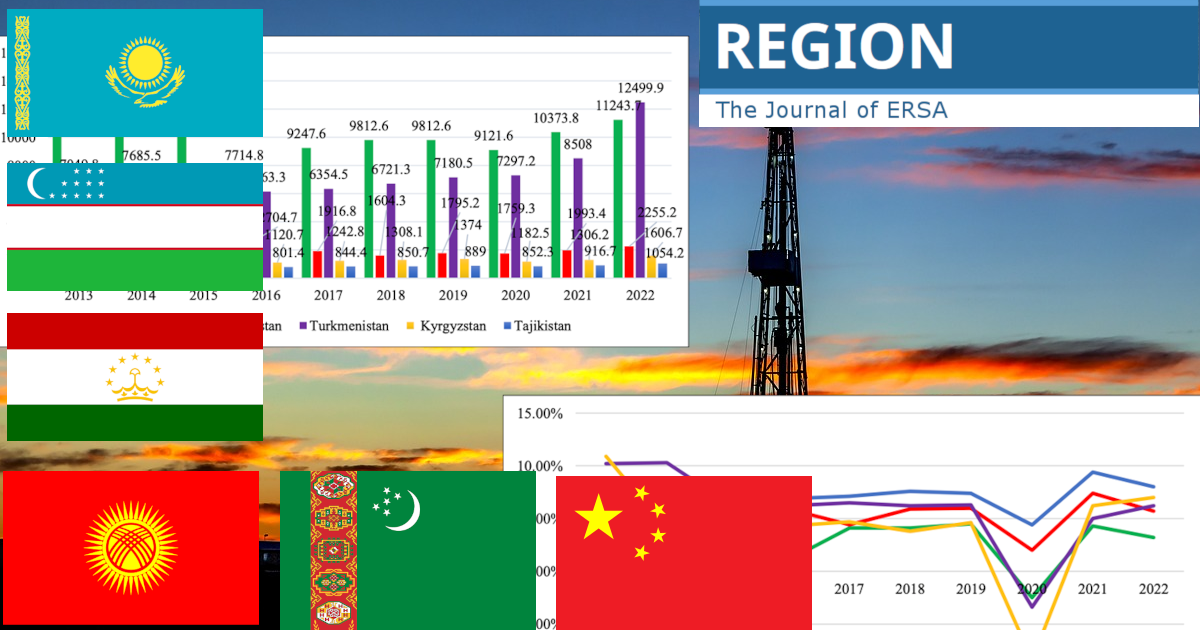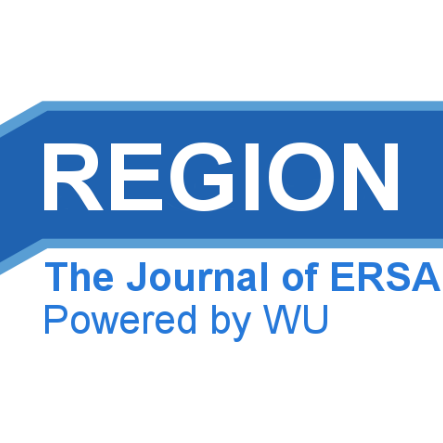China's Impact on Sustainable Economic Growth in Central Asian Countries in the Context of the Silk Road Economic Belt
DOI:
https://doi.org/10.18335/region.v11i2.527Abstract
This paper examines how the economic relations between China and the Central Asian countries affect the economic development of the Central Asian countries in the context of the Belt and Road economy. China has come up with the global economic strategy initiative known as `"`One Belt, One Road" as a way of incorporating and expanding its economic activities around the world into this initiative. The article argues that China's economic activities in Central Asia are part of its global economic strategy. China's global "``Belt and Road Initiative" is aimed at realizing its political aspirations through economic dominance, which then leads to a virtuous cycle. Of course, we all know that every country in the world needs to develop its economy, and Central Asian countries are no exception. Central Asian countries have the need and desire to cooperate with China to develop their own economies, which is the basis of this article. The method of argumentation in the article is to analyze the development needs and relations of cooperation between the two sides in terms of economic indicators, trade cooperation, economic dependence, infrastructure investment, geopolitical pattern of energy, and transportation of goods of Central Asian countries, respectively, and at the same time, data from World Energy Statistics Yearbook, World Bank, China Statistical Yearbook, and China's Outward Foreign Direct Investment Statistical Bulletin are used as the basis. This provides a clear understanding of the patterns of economic cooperation between China and Central Asian countries, and how they interact with each other. Despite the end of the Cold War and the collapse of the Soviet Union, Central Asia remains a central element of the People's Republic of China's (PRC) security strategy, a strategic location that creates a continuum between China's internal and external security. The guiding principle of China's policy towards Central Asia is primarily stability, which is the main theme of current Chinese politics, with the goal of ensuring continuity from domestic stability to the stabilization of border regions and surrounding areas. Throughout their independent existence, the Central Asian states have had different perceptions of Russia, the United States, China, and European countries, which is one of the prerequisites for the formation of multidirectional foreign policies in Central Asian countries. The balance of interests among Russia, the United States, China, and European countries in the region is of vital importance for Central Asian countries, which ensures the independent foreign policy and development paths of Kazakhstan, Uzbekistan, Kyrgyzstan, Turkmenistan, and Tajikistan, as well as contributes to the stability of the region.

Downloads
Published
How to Cite
Issue
Section
License
Copyright (c) 2024 Bin Zhang, Sheripzhan Nadyrov, Stepanov Anatoly

This work is licensed under a Creative Commons Attribution 4.0 International License.
REGION is an open journal, and uses the standard Creative Commons license: Copyright We want authors to retain the maximum control over their work consistent with the first goal. For this reason, authors who publish in REGION will release their articles under the Creative Commons Attribution license. This license allows anyone to copy and distribute the article provided that appropriate attribution is given to REGION and the authors. For details of the rights authors grant users of their work, see the "human-readable summary" of the license, with a link to the full license. (Note that "you" refers to a user, not an author, in the summary.) Upon submission, the authors agree that the following three items are true: 1) The manuscript named above: a) represents valid work and neither it nor any other that I have written with substantially similar content has been published before in any form except as a preprint, b) is not concurrently submitted to another publication, and c) does not infringe anyone’s copyright. The Author(s) holds ERSA, WU, REGION, and the Editors of REGION harmless against all copyright claims. d) I have, or a coauthor has, had sufficient access to the data to verify the manuscript’s scientific integrity. 2) If asked, I will provide or fully cooperate in providing the data on which the manuscript is based so the editors or their assignees can examine it (where possible) 3) For papers with more than one author, I as the submitter have the permission of the coauthors to submit this work, and all authors agree that the corresponding author will be the main correspondent with the editorial office, and review the edited manuscript and proof. If there is only one author, I will be the corresponding author and agree to handle these responsibilities.




